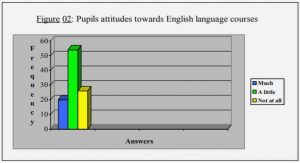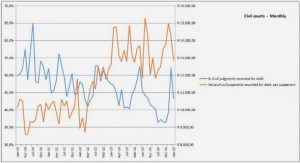Get Complete Project Material File(s) Now! »
The site: Argostoli, Cephalonia
Seismotectonics
The island of Cephalonia falls in the north-westernmost boundary of the Aegean plate. It is located in a tectonically active region, mainly formed by the Apulian (Adriatic region) microplate (Figure 2.1). This microplate is bounded by three tectonic plates: the stable continental Eurasian plate to the North, the Anatolian plate to the East, and the African plate to the South (Lagios et al., 2007). Plate motions showed in the Figure 2.1 indicates that the African plate is moving northward relative to Eurasia at a rate of about 10 mm/yr. The predominant motion between Africa and Arabia (~ 10 mm/yr) seems to be left-lateral motion along the Dead Sea transform fault. This northward motion of Arabia results in westward displacement of the Anatolian plate, counter-clockwise, relative to Eurasia. It is notable that the westward rotation of Anatolia (20-25 mm/yr) does not result in a compressional field in the Aegean area. Rather, an extensional stress field dominates the Aegean, which moves with much high velocity (~35 mm/yr) with respect to Eurasia.
Africa
The interaction between the African and the Eurasian tectonic plates where the Eastern Mediterranean lithosphere is being subducted beneath the Aegean lithosphere along the Hellenic Arc-Trench System, control the tectonic setting of western Greece (Le Pichon et al., 1995; Papazachos and Kiratzi, 1996; Lagios et al., 2007). Cephalonia, being one of the central Ionian Islands, lies in the western part of the subduction zone (Figure 2.1 and 2.2). Subduction results in high shallow seismicity along low-angle thrust faults of the Hellenic arc and in intermediate-depth seismicity along a well-defined Benioff zone in the southern Aegean (Papazachos, 1990). The western part of the Hellenic convergence zone, extending from Cephalonia to the south of Zakynthos, is also characterized by a positional change of the frontal thrust in this domain. The evolution here could be described as a continuation of the Alpine orogeny with a foreland-propagating fold and thrust belt of the Hellenides, the front of which jumped during the middle Miocene from its position at the Pindos thrust (east of Ionian zone) to the west of this zone at the Ionian thrust which is now clearly expressed to the east of Cephalonia and Zakynthos (Underhill, 1989; Hatzfeld et al., 1990, Lagios et al., 2007).
Faults of various directions and types (normal, reverse and strike-slip) traverse the Cephalonia area. An escarpment in the bathymetry northwest of the island indicates the existence of a strike-slip fault trending NE–SW (Finetti, 1976; Underhill, 1989; Tselentis et al., 1997). Underhill (1988, 1989) suggested that the strain accommodation within the main system of contraction results in this dextral strike-slip faulting. Figure 2.2 shows the NE-SW trending strike-slip fault system of Cephalonia, known as Cephalonia Transform Fault (CTF). CTF is a well-documented offshore active fault and limits the Island of Cephalonia to the west. This fault is a major right-lateral strike-slip fault, linking the continental collision to the subduction zone, between the Apulian microplate and the Hellenic foreland (Le Pichon et al., 1995; Sachpazi et al., 2000) and contributes significantly to the region’s geodynamic complexity (Le Pichon et al., 1995; Louvari et al., 1999). The recent shallow seismic activity in the area is thus associated with this strike-slip mechanism. The deeper seismicity, due to mostly compressional mechanisms, is related to the subduction.
Figure 2.2: Main fault systems of the Cephalonia Island taken from the Seismotectonic Map of Greece (IGME) (Lekkas et al., 2001; Lagios et al., 2007). CTF: Cephalonia Transform Fault.
From different studies on the analyses of the earthquakes occurring on the fault, it is considered that the length of the Cephalonia transform fault is approximately 100 km, striking in an almost NNE–SSW direction (Papadimitriou et al., 2006). The slip direction of the CTF is N 213° and is in agreement with a south-westwards motion of the Aegean. The rate of seismic slip in the CTF varies from 7 to 30 mm/yr based on DGPS measurements (Anzidei et al., 1996; Hollenstein et al., 2006), which is consistent with seismological data and considered to be the highest observed in the whole Aegean area (Papazachos and Kiratzi, 1996).
The site: Argostoli, Cephalonia
Seismicity
Greece is currently considered as the highest seismic activity area in Europe and characterized by the occurrence of large earthquakes. Figure 2.3(a) shows the shallow seismicity (h≤40km) in the Aegean and surrounding region after Kiratzi et al., 2007. The plot includes historical seismicity from 464 BC to 1910 and instrumental seismicity from 1911 to 2005. The highly frequent occurrences of large magnitude (Mw> 6.5) earthquakes are quite evident from the plot, especially in and around Cephalonia. Figure 2.3(b) illustrates the significant seismicity in the Ionian Sea for the time period from 1964 to 2005 where epicentres and fault plane solutions of moderate to large events that occurred in this period are presented (Papadimitriou et al, 2012). Fault plane solutions of all major events reveal right-lateral strike-slip faulting with a small thrust component striking in a SW–NE direction and dipping in SE.
Figure 2.3: (a) Shallow seismicity (h ≤ 40 km) in Greece and surrounding region. Yellow rectangle shows Cephalonia area. (Kiratzi et al., 2007; taken from Pitilakis, 2014). (b) Seismotectonic map of Ionian Sea and surrounding area (Papadimitriou et al, 2012). Small circles represent epicentres with Mw > 3.6 for the time period from 1964 to 2005, large circles labelled 1–10 correspond to historical and instrumentally recorded strong (Mw > 6.0) events before 1964. The fault plane solutions of the events with Mw > 4.5 for the same time period are also shown. Black lines represent main active faults.
In view of the seismicity, Cephalonia Island is, hence, one of the most active seismo-tectonic regions in Greece. The area is included in the highest seismic hazard class of the Greek building code. High seismicity in the central Ionian Sea is considered to be the result of intense crustal deformation associated with right lateral strike–slip faulting along the CTF which supports earthquake magnitudes up to M = 7.4 (Louvari et al., 1999). Historical data show that seismicity rate of the strong (M ≥ 6.5) main shocks in this zone remained stable during the last four centuries with an average of about one such shock per decade (Papadimitriou and Papazachos 1985; Kokinou et al., 2006). More than 10 earthquakes of magnitudes between 6.5 and 7.5 occurred in the area between 1900 and 1998 causing major destruction. The past large events (1469-1983) in Cephalonia and surrounding areas plotted from Papazachos et al. (2000) and (2010) are shown in Figure 2.4(a). It is remarkable that these past large events often appear clustered in time (showed in different colors).
In 1953, the city of Argostoli was devastated by a sequence of three Ms > 6 earthquakes that took place within 4 days, destroying 80% of the houses, and killing more than 450 people. The largest event, M = 7.2, occurred on 12 August 1953, at an epicentral distance less than 20 km from the town. Another large magnitude event, M = 7.0, occurred on 17 January 1983, at an epicentral distance of about 30 km, with, however, a low damage impact on Argostoli. Some other recent strong events include Mw = 6.5 earthquake in August 14, 2003 to the west of Lefkas, a sequence of Mw = 5.6 earthquakes in October 2005 and Mw = 5.5–5.7 earthquakes in April 2006 to the south of Zakynthos. Smaller events of 4 < Mw < 5 occur in the area in a regular interval and at least one event of Mw≈5.0 is expected in the broader region every year. Very recently, two strong earthquakes occurred on 26 January (Mw = 6.1) and 03 February 2014 (Mw = 6.0) in the western coast of Cephalonia, within 20 km distance from the city of Argostoli and damaged a significant number of structures. According to the Seismological Centre of the Aristotle University of Thessaloniki, the events were shallow crustal events with depth about 10 km. These two events were followed by a number of aftershocks up to Mw 5.5. The epicentres of the January 26 and February 3, 2014 strong events and the epicentre of the January 26 aftershock (M 5.5) are shown in the Figure 2.4(b). Focal mechanisms for these three events along with the typical focal mechanism of Cephalonia region are also provided. From the epicentre and the focal mechanism of the main shocks of 2014 events, it could be deduced that the focal mechanism of Cephalonia earthquake sequence resembles to the typical mechanism of the region and thus related to the well-known Cephalonia Transform Fault (CTF) zone.
Table of contents :
Chapter 1: Ground-motion variability from finite-source ruptures simulations
Summary
1.1 Introduction
1.2 Ground-motion simulations
1.2.1 Kinematic source models
1.2.2 Station layout
1.2.3 Synthetic ground-motion computation
1.2.4 PGV calculation
1.3 Analysis of PGV within-event variability
1.3.1 Variability considering bilateral ruptures only
1.3.2 Variability considering unilateral ruptures only
1.4 Discussion and conclusion
1.5 Data and resources
Chapter 2: Review of Argostoli site and dense array network
2.1 Introduction
2.2 The site: Argostoli, Cephalonia
2.2.1 Seismotectonics
2.2.2 Seismicity
2.2.3 Geology and geomorphology
2.2.4 Argostoli Valley
2.2 Seismological experiment
2.3 Data acquisition
2.4 Catalogue preparation
2.5 Selection of subset of events
2.6 Example wave forms
Chapter 3: Seismic Wave Field Analysis of Argostoli Dense Array Network58
3.1 Introduction
3.2 Seismic wave field analysis
3.3 Argostoli experiment and dense array characteristics
3.3.1 Dataset
3.4 Methodology
3.4.1 MUSIC
3.4.2 Quaternion-MUSIC
3.5 Data processing
3.6 Post-processing
3.7 Results from single dominant source : example event
3.7.1 Event characteristics
3.7.2 MUSIQUE results
3.7.3 Identified back-azimuth
3.7.4 Identified slowness
3.7.5 Energy repartition
3.7.6 Results from Array B
3.8 Robustness of the results
3.9 Summary results for all events
3.9.1 Back-azimuth distribution of the diffracted wave field
3.9.2 Dispersion curve (slowness)
3.9.3 Energy repartition between Rayleigh and Love surface waves
3.10 Results from double source identification
3.10.1 Array A results
3.10.2 Array B results
3.11 Interpretation of the energy partition between Rayleigh and Love waves
3.12 Interpreting observed site amplification
3.13 Discussion and conclusion
Chapter 4: Coherency analysis of Argostoli dense array network
4.1 Introduction
4.2 Short review on coherency models
4.3 Causes of incoherency
4.4 Coherency- a stochastic estimator
4.4.1 Complex coherency
4.4.2 Lagged coherency
4.4.3 Plane-wave coherency
4.4.4 Unlagged Coherency
4.5 Evaluation of coherency
4.5.1 Smoothing parameter
4.5.2 Selection of time window
4.5.3 Statistical properties of coherency: distribution, bias and variance
4.5.4 Prewhitening
4.6 Dataset
4.7 Selection of time-window for coherency estimation
4.7.1 Sensitivity test of the time-window selection
4.8 Estimation of Coherency from the Array Data
4.8.1 Verification of the algorithms used for coherency estimation
4.8.2 Sensitivity of lagged coherency to duration of time window
4.9 Results of coherency analysis from single events
4.10 Statistical analysis considering all the events
4.10.1 Estimation of Confidence Interval (CI)
4.10.2 Coherency estimates from the subset of events
4.10.3 Variation from different time-window selection approaches
4.10.4 Variation associated to the orientation of horizontal components
4.10.5 Variation from the array geometry
4.10.6 Variation from the site-axes orientation
4.10.7 Variation from source back-azimuth
4.10.8 Variability from coda windows
4.10.9 Magnitude Dependence
4. 10.10 Hypocentral Distance Dependence
4.11 Discussion and conclusion






